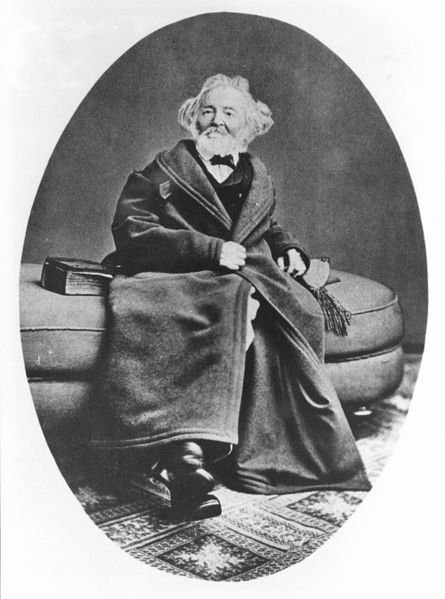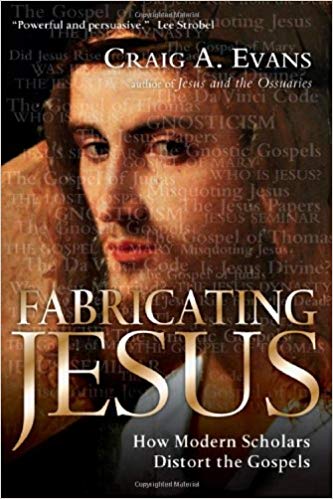Continued from More criteria . . . . Again, this post is part of a series of posts in response to Evans’s accusation that “no one trained in history” would ever think the evidence for the “historical Jesus” to be as thin as some of the radical critics assert.
Evans (Fabricating Jesus) lists two more criteria for establishing authenticity of Gospel sayings and deeds: Semitisms and Palestinian background, and Coherence (or consistency),
Semitisms and Palestinian background
This criterion . . . suggests that sayings and deeds that reflect the Hebrew or Aramaic language (Semitisms), of reflect first-century Palestine (geography, topography, customs, commerce) are what we should expect of authentic material. (pp. 50-51)
This explanation hardly lends justice to claiming that “semitisms and Palestinian background” ought to be regarded as a “criterion” for authenticity. I am quite sure Evans does not mean to suggest that if a saying does not reflect a “semitism” or a deed does not point to a specific “Palestinian background” that they must be ruled out as inauthentic!
Evans himself is clearly aware of the weakness of this “as a criterion of authenticity” on other grounds, too. He admits that semitisms detected behind the Greek translation do not mean that a saying was spoken by Jesus.
By all means it is certainly true that if Jesus did speak Aramaic (though in cosmopolitan Galilee is it not also possible he spoke Greek?), and if some of these sayings were handed down and translated into Greek and appeared in that form in our Gospels, then yes, we might expect some of them to retain traces of semitic constructions behind the Greek translation. But it does not follow that such a train of events preceded any particular case of a Greek saying that shows some evidence of a semitic original.
Ditto for the Palestinian background. The mere fact that the story of the gospels is set in Galilee and Jerusalem makes it virtually inevitable that there will be some “Palestinian background” reflected in some deeds and sayings. It does not follow that the narrator is faithfully recording the sayings and deeds of an historical Jesus.
Coherence (or consistency)
Finally, the criterion of coherence (or consistency) is also useful and functions in some ways as a catch-all. According to this criterion, material that is consistent with material judged authentic on the basis of other criteria may also be regarded as authentic. (p.51)
Nothing to say on this that has not already been said, in particular with the discussion of the criterion of Historical Coherence.
Summing up the criteria
Not one of the criteria can be used logically as a basis for judging the authenticity of a deed or saying. At best they can indicate plausibility. All historical events are at face value plausible — simply because they have actually happened. (Some events have appeared to be out of character for the actors involved, and some have happened unexpectedly, but that only means there are degrees of plausibility in hindsight.)
Much historical fiction, propaganda, false rumours and widespread beliefs only ever gain a foothold to begin with simply because they are plausible to the hearers or readers.
Criteria for authenticity that claim to be able to help us second guess what actually was said or done are not a substitute for genuine historical evidence. They are a lounge-chair substitute for primary evidence, if they are indeed expected to tell us as much. But no one “trained in history” can have any justification for placing on them any logical burden greater than they can bear.
The fundamentalist subterfuge
At this point Craig Evans writes:
All of these criteria have their place and can make (and have made) useful contributions to the scholarly study of the historical Jesus. They enable historians to give good reasons for judging this saying or that deed attributed to Jesus as authentic. The problem is in assuming that everything that is attributed to Jesus that does not enjoy support from one or more of the criteria should be regarded as inauthentic. (p.51)
In other words, I believe I am safe in interpreting this to mean that Evans wants just about everything in the Gospels to be believed as authentic even if none of the scholarly criteria for authenticity can support it. “Just about everything” because elsewhere Evans concedes that a few passages like that about the woman taken in adultery in the Gospel of John do not belong in any of the early manuscripts.
I also believe I am on solid ground in detecting dog-whistle language in the above paragraph by Evans. Read carefully, he says no more than that the criteria are “have their place”, “can make useful contributions”, “enable . . . good reasons”. But of course faith does not depend on “good reasons” that are better constructed to assist the tasks of a scholar. And Evans implies the obvious, that the criteria do not “have their place” and can make no “useful contributions” in those cases where a Gospel saying or deed are not supported by any of the criteria.
If I am seeing intellectual subterfuge where it does not really exist then I will be happy to be better informed. But having spent many years of my life within the ranks of fundamentalist believing Christians of various ilks, I think I am safe in saying I know enough of how they think and relate to the (unbelieving) public to make this accusation here with some confidence.




